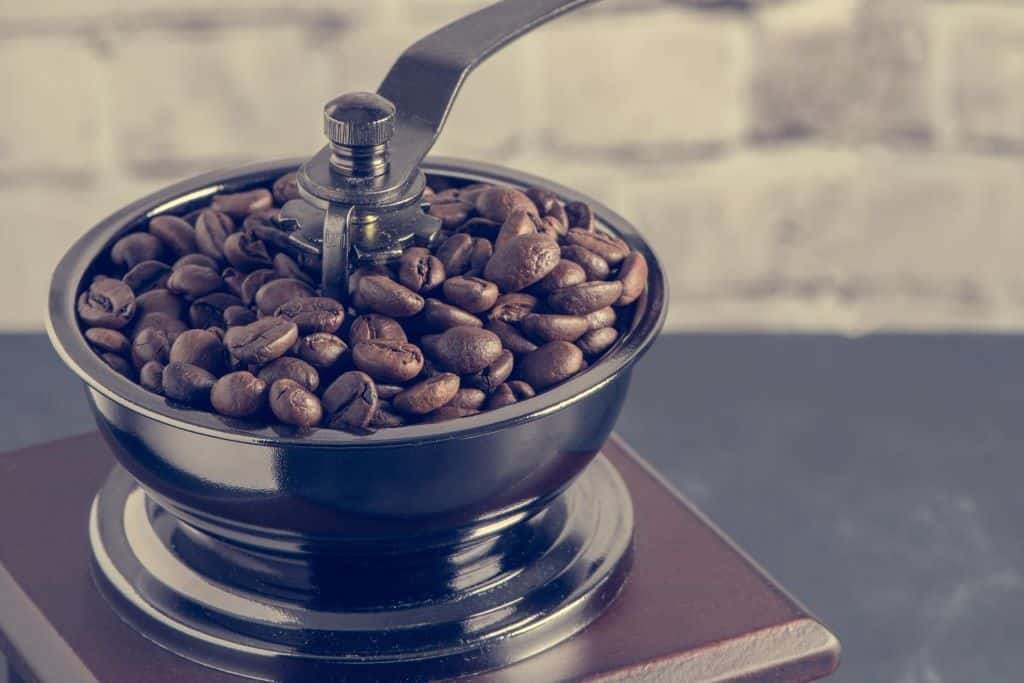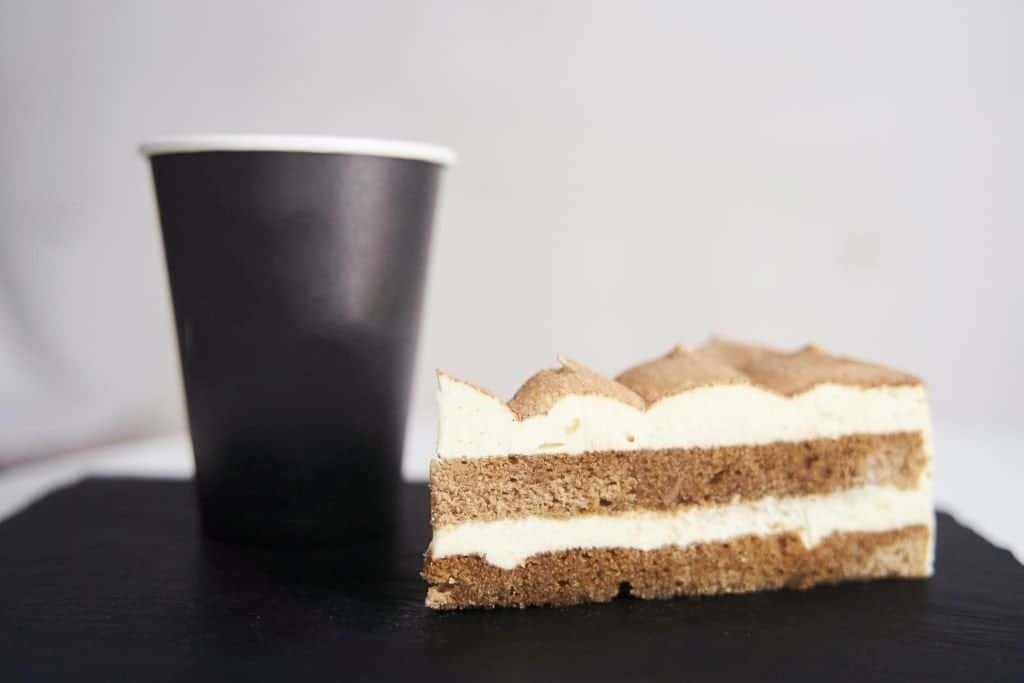Coffee enthusiasts often seek a perfect cup to kick-start their day or to revitalize during breaks. An ideal way to achieve this is by using a manual coffee grinder. By taking control of the grinding process, you can truly appreciate the bean-to-cup experience, exploring the richness and diversity of flavours that freshly ground coffee has to offer.
Manual coffee grinders offer many advantages over their electric counterparts. They provide a more consistent grind, allowing you to enjoy the best brew for your chosen coffee preparation method. You also have complete control over the grind size and the amount of coffee produced, tailoring the outcome to your palate and personal preferences.
Embracing the art of manual coffee grinding enables you to dive deeper into the world of coffee, improving your knowledge as well as brewing skills. As you master the subtleties and precision of grinding beans by hand, you’ll be rewarded with enhanced flavours, fuller-bodied brews, and a sense of satisfaction in crafting your own remarkable coffee experience.
Why Use a Manual Coffee Grinder

Flavour and Aroma
One of the primary reasons to use a manual coffee grinder is to enhance the flavour and aroma of your coffee. When you grind beans just before brewing, you can experience a fresher, more vibrant taste. In comparison, pre-ground coffee tends to lose some of its flavours and aromas over time. By opting for a manual grinder, you can ensure that you’re getting the most flavour-packed cup of coffee each time.
Manual coffee grinders also offer a significant advantage over electric blade grinders. Blade grinders tend to generate heat, which can negatively impact the taste of your coffee. In contrast, manual grinders utilise a burr grinding method that produces less heat and provides a more consistent grind size.
Consistency and Control
With a manual coffee grinder, you have complete control over the grinding process. This allows you to adjust the grind size to suit your preferred brewing method (e.g., French press, pour-over, espresso). Such control is often more difficult to achieve with an automatic grinder that has limited options.
In addition to control, manual grinders also provide a more consistent grind than their electric counterparts, especially the blade grinders. Consistency is crucial when it comes to brewing the perfect cup of coffee. The more uniform the grind size, the better the extraction process, which ultimately affects the flavour and quality of your coffee.
Portability and Sustainability
One feature that might be particularly appealing for coffee enthusiasts is the portability of manual coffee grinders. They require no electricity, making them an excellent option for camping, travelling, or simply for the convenience of being able to grind your coffee beans anywhere.
Not only are manual grinders portable, but they’re also more sustainable than electric grinders. By choosing a manual device, you’re using less electricity and reducing your carbon footprint. Moreover, manual grinders tend to have a longer lifespan since they have fewer parts and are easier to maintain.
In summary, using a manual coffee grinder offers numerous benefits, including improved flavour and aroma, consistency, control, portability, and sustainability. By incorporating one into your coffee-making routine, you can elevate the quality of your brew and enjoy a more satisfying coffee experience.
Selecting a Manual Coffee Grinder
When choosing a manual coffee grinder, there are several aspects to consider, such as the type of grinder, size and portability, capacity, and material. In this section, we will discuss these aspects to help you select the best manual coffee grinder for your needs.
Burr Grinders vs. Blade Grinders
Burr grinders and blade grinders are the two main types of coffee grinders available. In a burr grinder, two abrasive surfaces, called burrs, move against each other to crush the coffee beans. These grinders produce a more consistent and uniform grind, which results in better flavour extraction from your coffee.
On the other hand, blade grinders utilize a spinning blade to chop coffee beans. This method results in an uneven grind and can generate heat during the process, leading to the potential loss of essential coffee flavours. Since your goal is to get the best-tasting coffee, you should opt for a manual burr coffee grinder.
- Skerton Plus: A favorite amongst coffee newcomers and professionals alike. Its compact size makes it the perfect grinder both travel and home. This grinder can make a full range of grind sizes,…
- New and Improved: An update to the original Skerton– The Skerton Plus features a stronger grind shaft and burr stabilization plate, enabling a more precise and uniform grind
- Perfect Grind: Ceramic conical burrs ensure a precise, uniform grind– Our burrs transfer less heat and shave coffee beans versus cracking them like blade grinders. Ergonomically designed crank handle…
Size and Portability
If you frequently travel or have limited kitchen space, consider the grinder’s size and portability. Smaller, compact grinders are easy to carry and require less storage space. However, smaller grinders usually have a lower capacity for coffee beans, so bear this in mind when selecting your manual coffee grinder.
Capacity
The capacity of your grinder refers to the number of coffee beans it can hold and grind at a time. If you mostly brew coffee for yourself, a smaller capacity grinder will suffice. However, if you entertain guests or have a large family who enjoy freshly ground coffee, you may want to opt for a grinder with a larger capacity. Take into account your daily coffee consumption when determining the appropriate grinder capacity for your needs.
Material
Manual coffee grinders are available in various materials such as stainless steel, ceramic, or plastic. Each material has its pros and cons, so consider your preferences and priorities when selecting a grinder material:
- Stainless steel grinders are durable, resistant to rust and corrosion, and easy to clean. However, they can be heavier than plastic or ceramic grinders.
- Ceramic grinders are non-porous, which helps prevent the absorption of coffee flavours, and they are less likely to rust. However, they can be more fragile than steel grinders.
- Plastic grinders are lightweight and cost-effective but might lack the durability of steel or ceramic grinders.
Consider the aspects discussed above when selecting a manual coffee grinder that best fits your needs. This will help you choose a grinder that not only meets your requirements but also enhances your coffee brewing experience.
Steps to Operate a Manual Coffee Grinder
Choose the Correct Grind Size
Before you start grinding, it’s essential to understand the right grind size for your brewing method. For an aeropress or espresso, you’ll need a finer grind; for a drip coffee maker, opt for a medium grind; and for a French press, a coarser grind. Adjust your manual coffee grinder’s settings accordingly. Always remember to lock the grind setting by placing the locking ring, which helps maintain the desired grind size during the process.
Use the Right Coffee Beans
Pay attention to the type of coffee beans you’re using. Experiment with different beans to find a flavour that suits your taste. For espresso, choose dark roast coffee beans, while for drip coffee, you can go with light or medium roast beans. Before grinding, ensure your beans are evenly roasted. Visually inspect them and feel their texture with your hands.

Measure the Amount of Coffee
To get the perfect amount of ground coffee, you need to measure the coffee beans beforehand. This prevents you from grinding too much or too little coffee. Pour the beans into the grinder, and make use of the markings on the side to measure your desired amount. Here’s a simple measurement guide:
- Aeropress: 15-18g of coffee beans
- Espresso: 18-20g of coffee beans
- Drip coffee maker: 48-60g of coffee beans for four cups
- French press: 68-70g of coffee beans for a 1-litre capacity
Grinding the Coffee Beans
Once you’ve adjusted the settings and measured the coffee beans, you can start grinding. Place the handle on top of the grinder and secure it with the top nut. Turn the handle clockwise to grind the beans. Keep grinding until you’ve processed all the beans, and ensure a consistent grind size throughout.
Remember to check the grind size by grinding a small amount of beans first. If the resulting grounds aren’t the desired size, adjust the settings and test again. Once you’ve achieved the correct grind size and consistency, proceed to grind the rest of the coffee beans.
Adjusting the Grind Size
First, ensure that your manual coffee grinder is clean and ready for use. Gather all the necessary components, including the grinder itself, the handle, locking ring, and adjustment ring.
Begin by disassembling your grinder to expose the grind dial or adjustment ring. On most grinders, this can be done by unscrewing or detaching the coffee grounds collector at the bottom. Attach the handle securely to the top of the grinder, as this will help you smoothly adjust the grind size.
Now, locate the adjustment ring, which should be just above the burrs (the abrasive surfaces), usually made of ceramic or steel. The adjustment ring is the key component that will help you achieve the grind size you desire.
Gently turn the adjustment ring clockwise to move the burrs closer together, resulting in a finer grind. Alternatively, turn the adjustment ring counter-clockwise to move the burrs further apart, leading to a coarser grind. Remember, the perfect grind size depends on your brewing method and personal taste. For example:
- Fine grind: Ideal for espresso and Aeropress
- Medium grind: Suitable for drip coffee makers and pour-over methods
- Coarse grind: Best for French press and cold brew
Once you’ve adjusted the burrs to the desired distance, secure your chosen setting by tightening the locking ring. This ensures that the grind size stays consistent throughout your coffee grinding process.
To test your new grind setting, add a few coffee beans to the grinder and begin turning the handle. Observe the consistency of the grounds, and if needed, make further adjustments to the grind size. This may require several attempts until you find the perfect grind size for your taste and brewing method.
In conclusion, adjusting the grind size on a manual coffee grinder is simple and straightforward. With some patience and practice, you’ll be able to achieve the perfect grind for a delicious cup of coffee tailored to your preferences.
Cleaning and Maintenance
- Durable quality:High quality natural pig bristles and smooth solid wood handle,very situable for daily using.Good designed to brush away coffee ground residue without damaging the blades.
- Pig Bristles Round Handle Coffee Grinder Brush:It’s natural bristlesso it’s washable, but make sure it dries thoroughly before using it again. Don’t soak it.Usually just flick all the grounds off and…
- Heat Resistance Nylon Coffee Machine Brush:Unique design and water deflecting fins keep your hands cool and dry while back flushing for everyday use.Clean your group head on your espresso machine…
Daily Cleaning
To keep your manual coffee grinder in excellent condition, it’s essential to perform daily cleaning. This will prevent the build-up of coffee oils and particles, ensuring the optimal performance of the grinder.
- Remove excess coffee grounds: After each use, tap the grinder gently to remove any remaining coffee grounds from the device. Turn the grinder upside down and give it a few shakes to get the loose grounds out.
- Wipe down the exterior: Using a lint-free cloth, wipe down the exterior of the grinder to remove any dust or residue.
- Clean the burr and chute: Use a soft brush, such as a toothbrush, to clean the coffee particles and oils from the outer and inner burr and the chute. Ensure that you move the brush in an up-and-down direction to effectively remove the grounds from the burr teeth.
Periodic Maintenance
In addition to daily cleaning, it’s crucial to perform periodic maintenance on your manual coffee grinder to keep it running smoothly and efficiently.
- Disassemble the grinder: Unwind the adjustment knob and set it aside, then remove the inner burr, the centrepiece, the metal washer, the spring, the plastic washer, and the rod.
- Clean the components: Thoroughly clean each component using warm, soapy water and a soft brush. Be sure to scrub away any built-up coffee oils or particles, focusing on the burr teeth and other hard-to-reach areas. Rinse the parts with water and allow them to dry completely.
- Inspect the burrs: Examine the burrs for signs of wear or damage. If you notice any issues, consider ordering a replacement to maintain the quality of your grind.
- Reassemble the grinder: Once the components are clean and dry, reassemble the grinder by reversing the disassembly steps. Ensure everything is securely in place before using the grinder again.
By following these guidelines for daily cleaning and periodic maintenance, you will ensure the longevity and optimal performance of your manual coffee grinder.
Frequently Asked Questions
Adjusting grind size
To adjust the grind size of your manual coffee grinder, follow these steps:
- Remove the handle and top nut, then lift off the burr top.
- Locate the grind adjustment mechanism, which varies depending on the model.
- Turn the adjustment ring or screw to your desired setting: Clockwise for a finer grind, and counter-clockwise for a coarser grind.
- Reassemble the grinder and test the grind size by grinding a small amount of beans. Adjust as necessary to achieve your desired consistency.
Cleaning the grinder
Proper care and cleaning are essential to keep your grinder performing at its best. Follow these tips for cleaning your manual coffee grinder:
- Remove all coffee grounds from the burrs and hopper by gently tapping and brushing.
- Disassemble the grinder as much as possible without damaging it.
- Clean each part with a soft, damp cloth and mild detergent. Avoid immersing in water to prevent rusting.
- Allow all parts to dry thoroughly before reassembling.
Manual vs electric
Manual and electric coffee grinders offer different advantages:
- Manual grinders are portable, offer more control over grind size, tend to be quieter and require no power source.
- Electric grinders are generally faster and more convenient, often providing additional settings and features such as timers.
Consider your preferences, location, and budget when choosing between manual and electric grinders.
Grinding time
The grinding time for a manual coffee grinder depends on several factors:
- The amount of coffee beans you need to grind
- The grind size setting
- The capacity of the grinder
- Your grinding technique
Generally, grinding enough beans for a single cup of coffee takes approximately 30 seconds to 2 minutes. However, this may vary depending on your own speed and strength.
Top manual grinders
Here are some top manual coffee grinders to consider:
- Snow Peak Barista Field Grinder
- Hario Skerton Ceramic Plus Coffee Mill
- Peugeot Bresil 8.75″ Coffee Mill, Walnut
These grinders are known for their quality, grind consistency, and ease of use.
Beginner tips
When using a manual coffee grinder for the first time, consider these tips:
- Start by grinding a small amount of beans to familiarize yourself with the adjustment settings and grind size.
- Experiment with various grind sizes to determine your preferred brewing method.
- Grind only the amount of coffee needed for immediate use to ensure freshness.
- Clean your grinder regularly for optimal performance.






